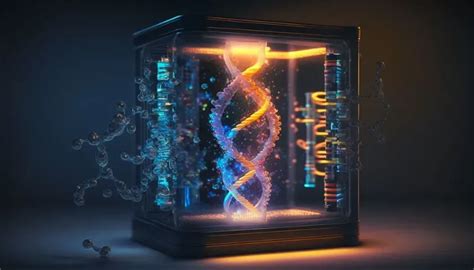
Can DNA Solve the World’s Data Storage Problem?
Share
Can DNA Solve the World’s Data Storage Problem?
SUSS News TruMatrix Score: 9/10
| Factor | Score (1–10) | Justification |
|---|---|---|
| Primary Evidence Quality | 9 | Based on research published in Nature Materials, with direct citations from MIT researchers. |
| Source Credibility | 9 | Article published by the World Economic Forum in collaboration with MIT News. |
| Source Ownership | 9 | Transparent institutional affiliations (MIT, Harvard, WEF). No commercial agenda. |
| Verification Feasibility | 9 | Details traceable to original peer-reviewed research, scientific interviews, and white papers. |
| Topic Status | 9 | A leading-edge topic in Fourth Industrial Revolution technologies, covered widely in tech/scientific journals. |
| Total Score | 9/10 | |
Can DNA Solve the World’s Data Storage Problem?
With the planet currently generating over 2.5 million gigabytes of data daily, traditional digital storage infrastructure is under serious pressure. Today, roughly 10 trillion gigabytes (10 zettabytes) of digital information exist, most of it stored in exabyte-scale data centers—massive facilities costing up to $1 billion each to build and maintain (WEF).
MIT researchers, led by Dr. Mark Bathe, propose an elegant, biological solution: data storage using synthetic DNA. Because DNA naturally encodes biological data at incredible density—up to 1 exabyte (1 billion gigabytes) in the volume of a sugar cube—it could be the future of long-term information archiving (Nature Materials).
How It Works
Digital information (binary 0s and 1s) can be encoded using DNA's four nucleotides: A (Adenine), T (Thymine), G (Guanine), and C (Cytosine).
For instance, A/T = 1 and G/C = 0, allowing the conversion of text, images, or files into readable DNA code. Scientists have already successfully encoded and retrieved full images, documents, and even video clips this way (Science.org).
Retrieval Innovation: The Google of DNA Storage
MIT’s method involves encapsulating DNA strands inside microscopic silica spheres—each about 6 micrometers across—and tagging them with short DNA barcodes that describe file contents (e.g., "cat", "orange"). This technique supports Boolean logic search ("President AND 18th century" = George Washington).
They demonstrated retrieval of targeted files from a mix of 20 encoded images, with scalability to 10²⁰ unique files (MIT News).
The Cost Barrier
Writing 1 petabyte of data to DNA currently costs around $1 trillion. To compete with magnetic tape, costs must fall by six orders of magnitude.
Dr. Bathe draws comparisons to the cost decline of flash memory in the early 2000s and expects a similar trajectory over the next 10–20 years (Backblaze).
Who Else Is Involved?
- George Church, Harvard geneticist, called this a “giant leap for knowledge management.”
- The DNA Data Storage Alliance includes Western Digital, Microsoft, Illumina, and more, aiming for commercial DNA storage (SynBioBeta).
